The cascading mid-afternoon sun pours through windows of a second-floor building, where a small group of women are cutting and sewing fabrics. A tinge of sunlight fades as the women gradually increase the focus and intensity of their tasks.
Then, one of the women leaves the classroom to retrieve a garment and alteration tools from a library next door. Another woman returns from the end of the hall after fitting a model for a custom-made garment.
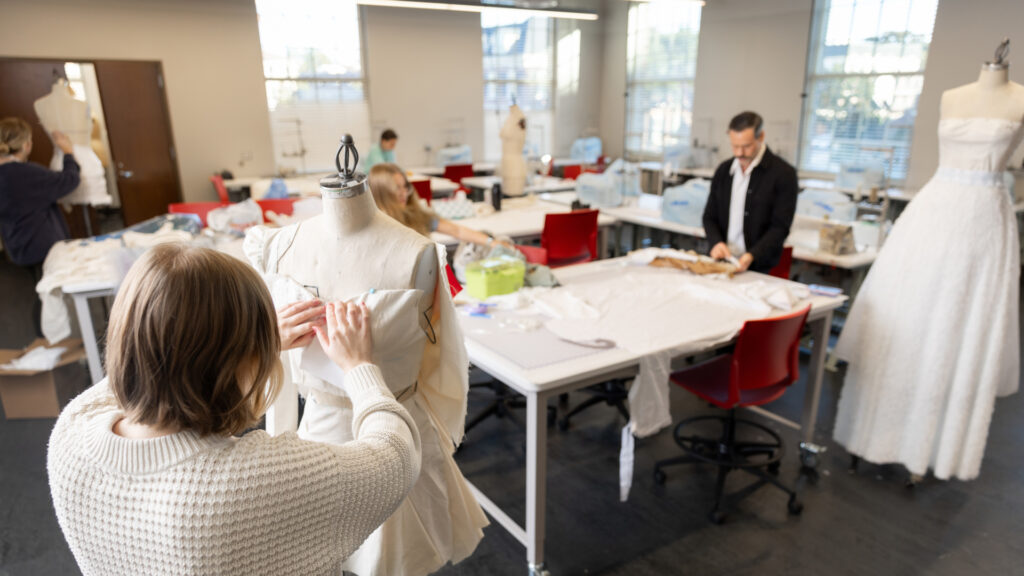
The women move seamlessly from one space to the next, all working toward the same goal: completing their capstone projects for Professor Brian Taylor’s advanced apparel design course at The University of Alabama. His seniors must design and produce a collection based on their respective target philosophies and will spend most of the Fall 2023 Semester readying for a fashion show in November, where they’ll debut their designs.
“We each are required to have three to five looks,” said Abbie Saul, a senior apparel design and retail fashion major from Cumming, Georgia. “We began this summer with ideation, concepts, and gathering all our fabrics and sketches of what we wanted to do.
“So, it’s been a busy time for us.”
Saul is one of eight seniors in the course. After graduation, she and her classmates will follow the career paths of recent alumni at designer brands like Brandon Maxwell and Oscar De La Renta, and at retailers such as American Eagle and Macy’s. But how they matriculate to the workforce will differ greatly.
The recent opening of Drummond Lyon Hall, a 25,000-square-foot facility for apparel design and fashion retail programs, provides a distinctive learning experience in a state-of-the-art environment. The facility features cutting-edge technology, enhanced and centralized resources and dedicated spaces for production and displays that were previously unavailable.
“It’s pretty groundbreaking for a program like this, especially in this country, where there aren’t many apparel and textile studies programs that have their own building,” Taylor said.
“There’s so much excitement right now.”
Drummond Lyon Hall includes:
- The Fashion Archive historical garment and textiles collection
- Conservation laboratory
- Exhibition galleries
- Two cutting-edge studio classrooms
- Flex space for receptions or lectures
- Offices for fashion retailing and apparel design faculty
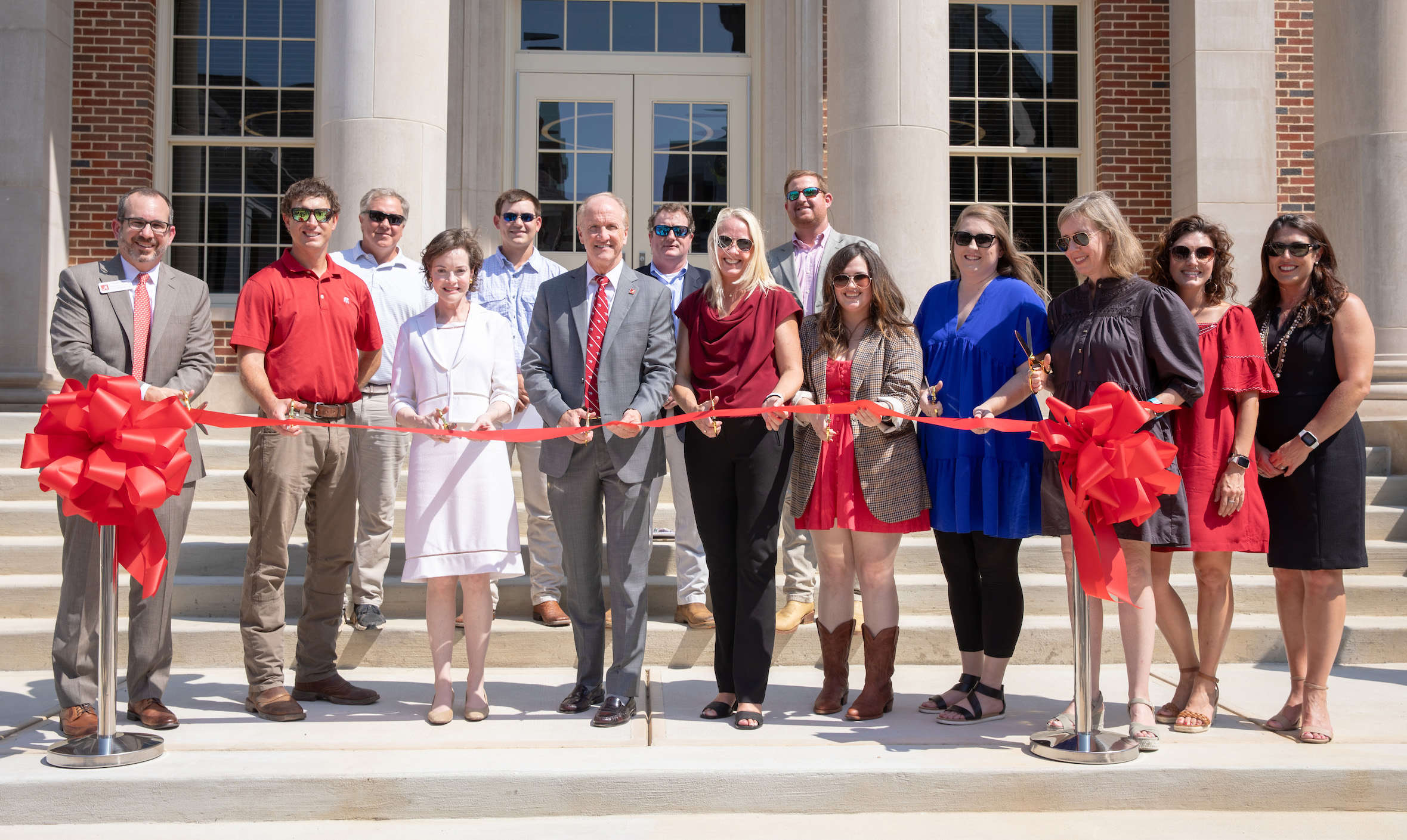
The facility is named in recognition of a commitment from Terri Drummond Lyon, a 1986 graduate of UA.
“This is a tremendous opportunity to provide our students with the best resources and facilities to create their pathway to success in fashion and design,” Drummond Lyon said when the project was announced in 2022. “It is my honor to be one among many who are answering the call to support CHES and the University, and to help bring their vision for the future of the apparel and textiles program from conception to reality.”
An “Immersive Experience”
The aim for centralizing teaching, lab spaces and learning resources at Drummond Lyon Hall was for students to “evolve” beyond classroom instruction, Taylor said. To achieve this, faculty were intentional in where the studios and exhibition spaces would be located and how they were designed, the color of walls and the sizes of the cutting tables. The result is a “clean” look of a real design studio with the functionality of a factory-type setting.
“The entire second floor has become an immersive experience for our students, surrounded by fashion study and the ability to make and create,” Taylor said. “And having everyone together has helped the younger students see what the older students are working on to provide inspiration to their own work.”
The dynamics and versatility of the exhibition galleries drive inspiration further, Saul said. The galleries are spacious and include sound systems and video projectors that allow students to display their coursework and private collections, while also allowing for a fully immersive show.
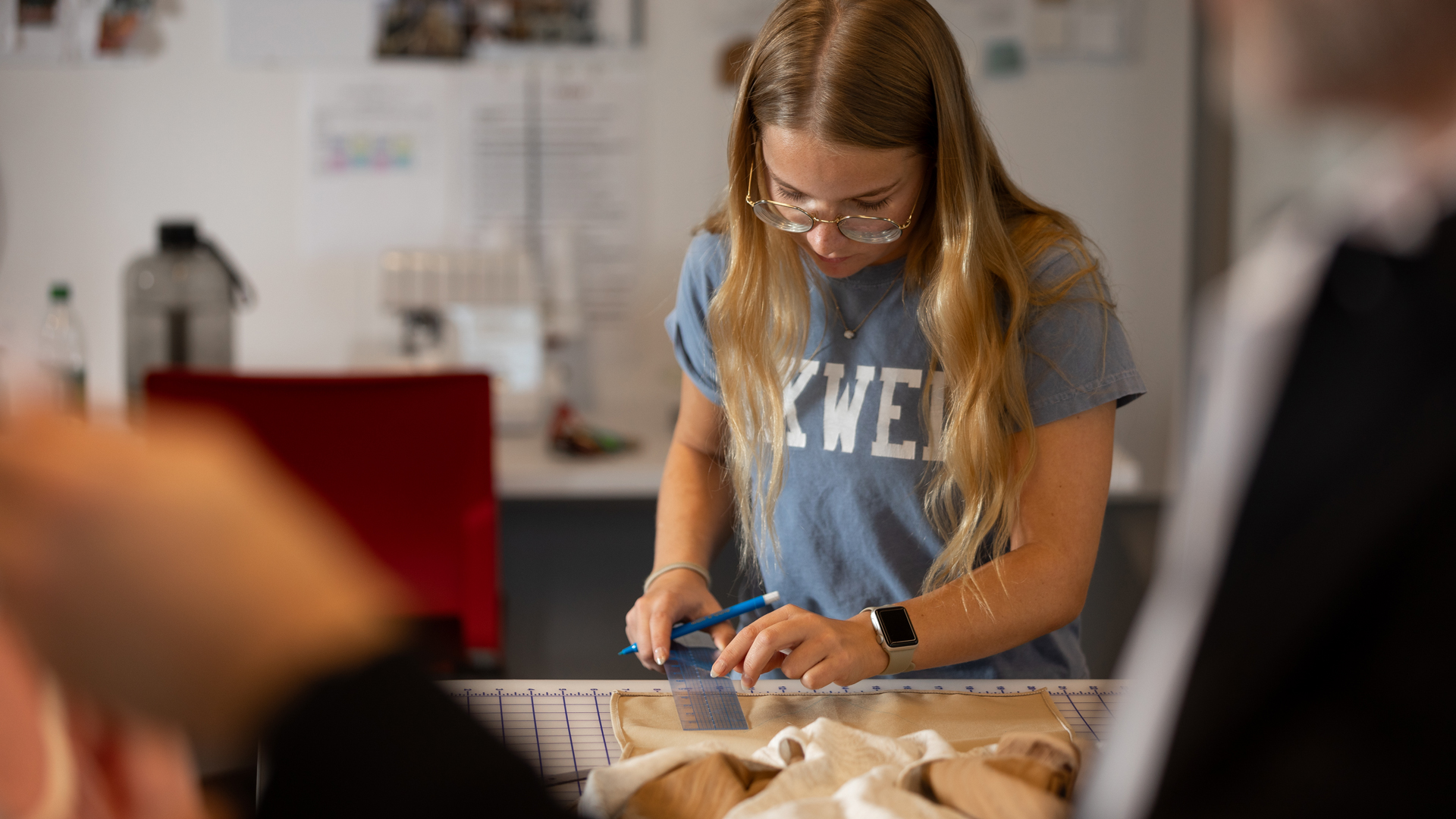
Saul, president of UA’s Student Fashion Association, was one of three students to make the first window display in Drummond Lyon Hall. She says the expanded spaces for displays and exhibitions help improve inclusion.
“Previously, we had space where we could fit maybe three mannequins, which limited how many students could be picked for display,” Saul said. “Now, we can fit 10 [mannequins] and have more students engaged.”
Hidden Gems
While students cut their teeth in the design studios and showcase their creations in the exhibition spaces, they conduct their research and ideate in the archives and library.
The archive is in a temperature-controlled room in the basement level of Drummond Lyon Hall and is an omnibus of textile artifacts, featuring samples of garments across different eras of fashion. The archive helps students understand the evolution of designs and garment construction and how those techniques can be incorporated into their own designs.
“The archive downstairs is such a great resource,” Saul said. “My fashion show last semester was inspired by the 1920s, and I sat in the library for close to eight hours flipping through books. But now, we can go downstairs, find what we’re looking for, and actually look at garments and feel the fabrics.”
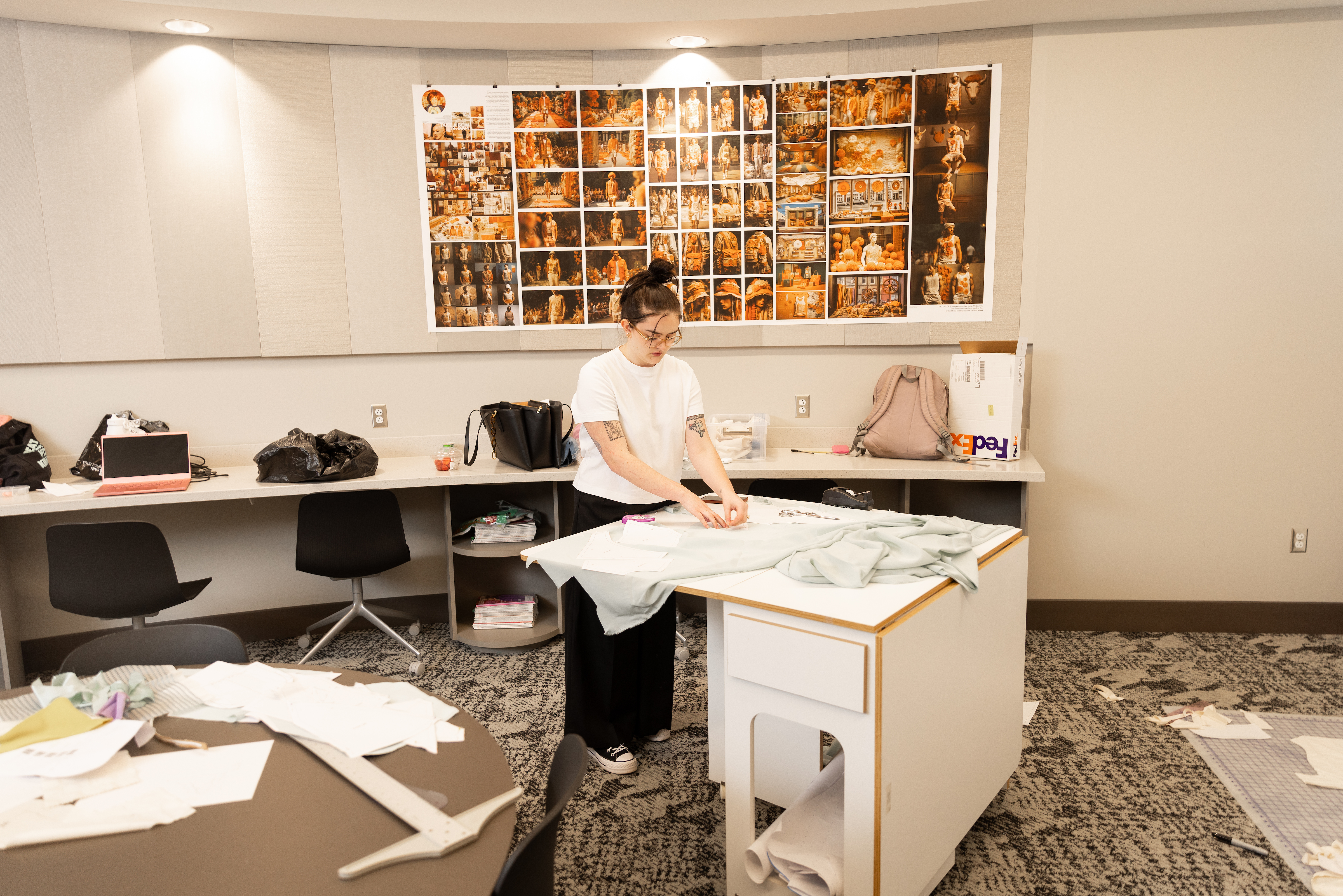
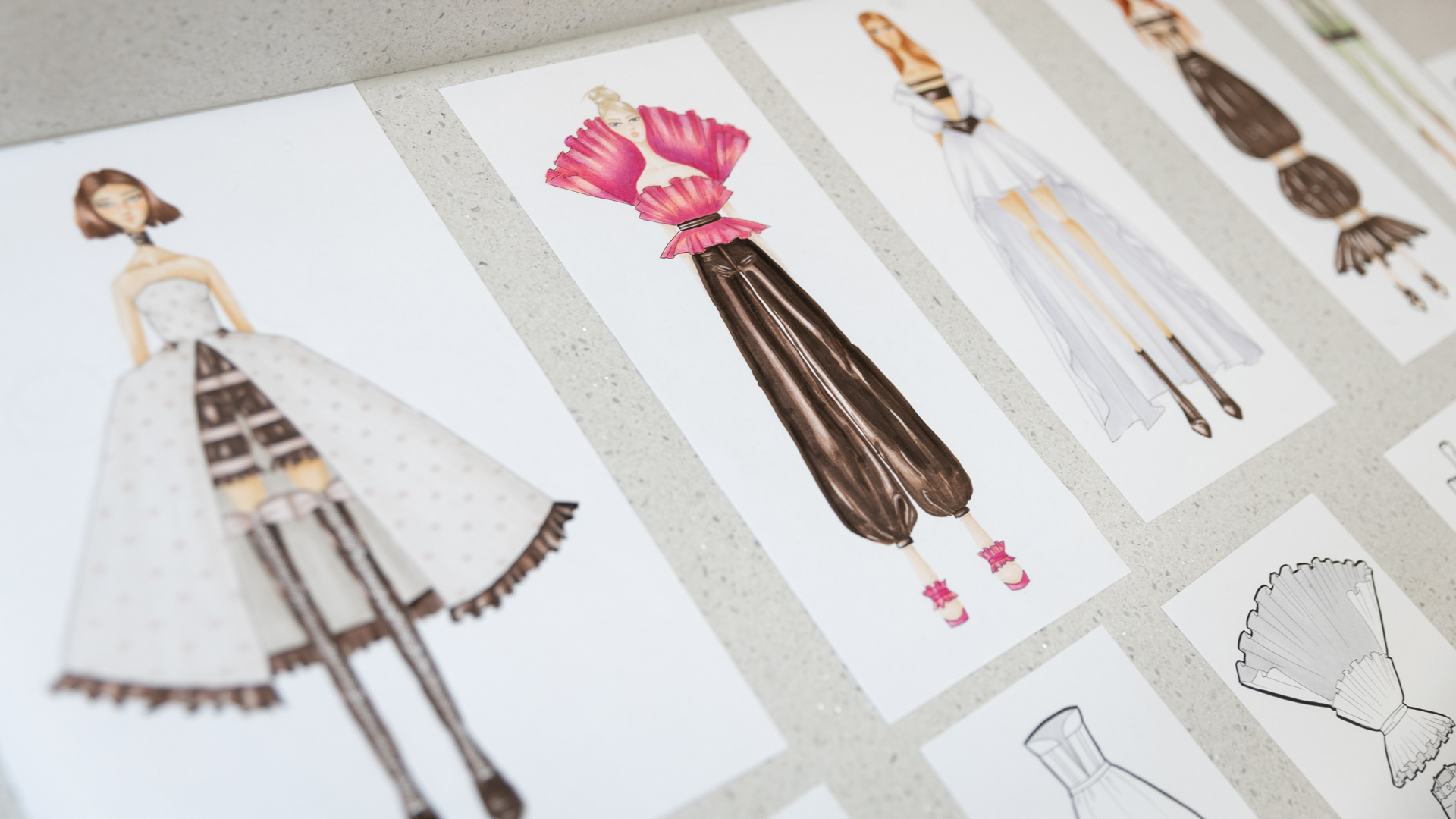
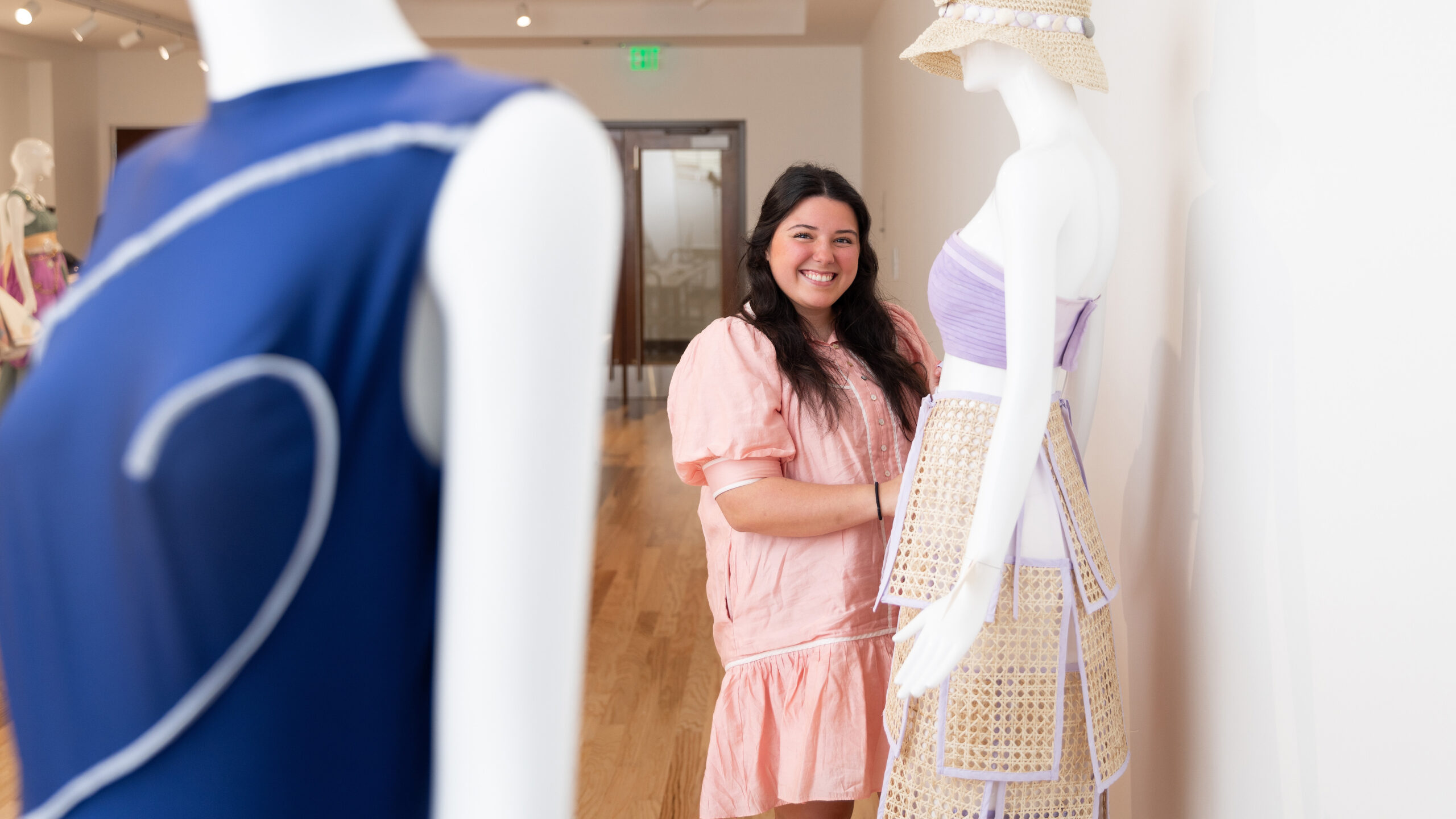
The library, located on the second floor between a studio and gallery, is a hub for both research and collaboration, Taylor said. The library houses volumes of Mademoiselle and Vogue magazines, some dating back to the 1920s. The library also features pin-up boards and lockers for students to store materials and supplies.
“Students use the library as an incubating and collaborative area and to socialize with each other,” Taylor said. “It’s a space that they’ve made their own, and it’s been interesting to see how they’ve utilized it.”
More to Learn
Taylor said having “everything in one space” has already improved efficiency, both in students completing tasks and in faculty executing their lessons. Technology upgrades are helping streamline instruction and to “mobilize” classrooms for lectures, demonstrations and executing projects.
“We have a great projection system, and the document cameras in the rooms have changed how we teach because we can show how to do pattern making, illustration and intricate hand-sewing skills,” Taylor said. “The camera can capture it live, and the students watch it in real time. Previously, students would crowd around us for a demonstration, which would take a lot of time.”
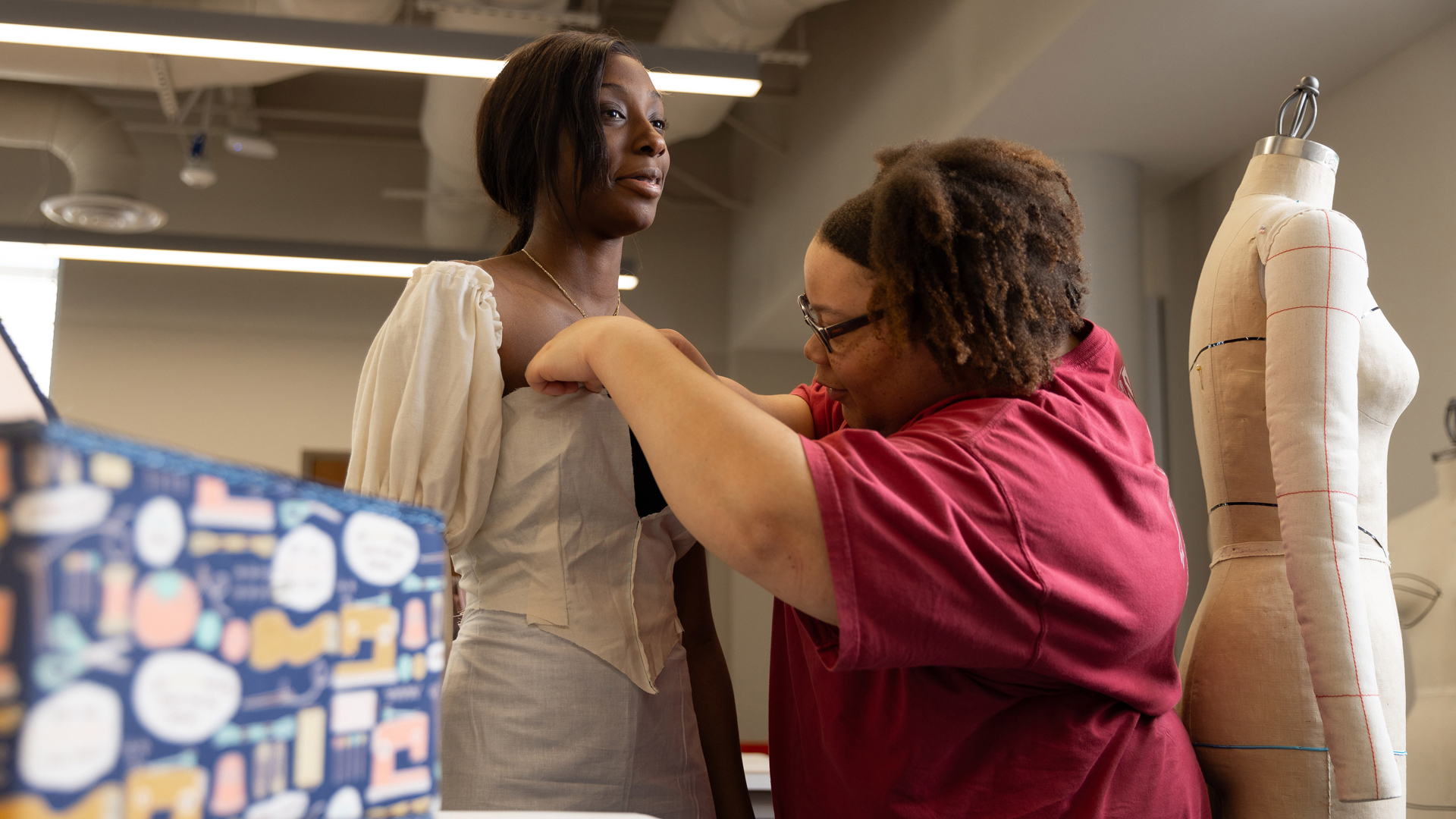
Taylor said he and other faculty will later conduct a broader assessment of resources, space, student performance and industry standards to determine course design for the future, potentially creating new courses or condensing multiple courses into one.
Beyond instruction, Drummond Lyon Hall offers the potential to grow partnerships and internship pathways. Taylor said industry professionals have toured the building and have been impressed to see the investments into the program, “knowing the talent we’ll have come through here.”
“Drummond Lyon Hall does a lot of talking for the program,” he said. “There’s nothing like this in Alabama or the SEC.”